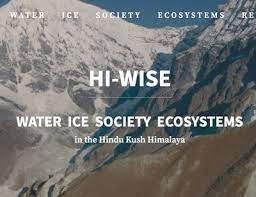
Snow and ice in the Hindu Kush Himalaya are fast disappearing, with grave implications for people and nature.
https://hkh.icimod.org/hi-wise/
Unprecedented and largely irreversible changes to the Hindu Kush Himalayan cryosphere, driven by global temperature rises, threaten two billion people and are accelerating species extinction.
ICIMOD’s new report – Water, Ice, Society, Ecosystems in the Hindu Kush Himalaya – is the most accurate assessment of changes to the Asia high mountain cryosphere to date. It is also the first time their impacts on water, biodiversity and society have been properly mapped.
The report urges policymakers to prepare for the cascading impacts of climate change in this critical mountain biome, which provides freshwater services to a quarter of the world’s population.
It calls for urgent international support and regional cooperation for inevitable, near-term loss and damage, and to help communities adapt.
Key Findings
Glaciers disappeared 65% faster in the 2010s than in the previous decade
On current emissions pathways 80% of glaciers’ current volume will be gone by 2100
Availability of water is expected to peak in mid-century and then decline
Vulnerable mountain communities are already experiencing major adverse impacts: loss and damage to lives, property, heritage, infrastructure
Floods and landslides are projected to increase
Impacts on fragile mountain habitats are particularly acute
"Climate inaction is accelerating. This report shows that the HKH region is particularly vulnerable to the impacts of climate change. We must act now to protect this region and its people."
Prof. Saleem ul Huq
Director of the International Centre for Climate Change and Development, Bangladesh, and on the Advisory Board to COP28
The snow and ice held in the mountains of the Hindu Kush Himalaya provide freshwater for 2 billion people in Asia.
With glaciers disappearing at an unprecedented rate due to climate change, scientists warn of devastating consequences for people and nature from the region's changing cryosphere.
Play song:
Availability of water in the HKH is expected to peak in mid-century, driven by accelerated glacial melt, after which it is projected to decline, with variability in meltwater from glaciers and snow resulting in huge uncertainty both for mountain communities and vast lowland populations. Floods and landslides are projected to increase over the coming decades, threatening the lives, livelihoods, property and infrastructure of people and settlements downstream.
ICE
Ice and snow in the Hindu Kush Himalaya feed 12 rivers that provide freshwater and other vital ecosystem services to 2 billion people in 16 countries: 240 million people in the mountains and a further 1.65 billion downstream. On current trajectories, glaciers in the Hindu Kush Himalayas could lose up to 80% of their current volume; snow cover is projected to fall by up to a quarter; and permafrost is decreasing.
SOCIETY
While almost 2 billion lives and livelihoods are at risk because of the rapid cryospheric change happening in the HKH region, already vulnerable mountain communities are being hit hardest. Families in the mountains are facing crop loss and failure, fodder shortage, livestock deaths, with disasters causing loss and damage of lives, property, heritage and infrastructure and driving migration and psychological impacts. Hazards are becoming more complex and devastating.










Add new comment